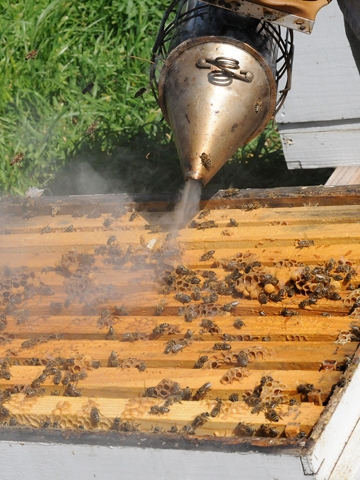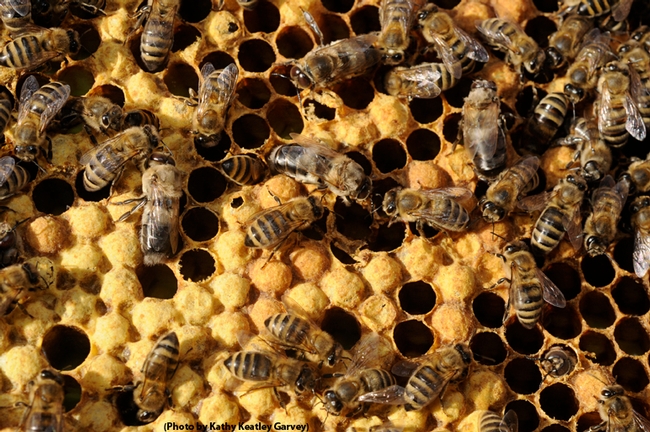
Varma's time-lapse video of 2500 images vividly shows the development of eggs to pupae to adults. He captured the video at the Harry H. Laidlaw Jr. Honey Bee Research Facility, University of California, Davis. Varma's images of a bee in flight, and a close-up of an emerging worker bee are also from the Laidlaw apiary.
Those are our girls!
Indeed, our bees from the Laidlaw facility figured quite prominently in the piece, “Quest for a Superbee,” published in the May edition of National Geographic.
Staff research associate/beekeeper Billy Synk worked with and assisted photographer Varma for about a year. Extension apiculturist emeritus Eric Mussen, who retired last June after 38 years of service, served as a research fact-checker. National Geographic contacted him for data confirmation.
The article, authored by Charles Mann, questions “Can the world's most important pollinators be saved?' and ponders “how scientists and breeders are trying to create a hardier honeybee.”
In his article, Mann explores what it would take to build a better bee. He touches on RNAi and quotes bee researcher Marla Spivak of the University of Minnesota and recipient of a MacArthur Foundation “genius grant” as saying “If you target one specific area, the organism will always make an end run around it.” She advocates a “healthier, stronger” bee, or what Mann writes as “one that can fight (varroa) mites and disease on its own, without human assistance.”
Spivak was the keynote speaker at the Bee Symposium, hosted May 9 by the Honey and Pollination Center in the UC Davis Conference Center. It drew a crowd of 360. (Soon we'll post video from the symposium.)
Spivak and John Harbo of the USDA's research center in Baton Rouge, La. “both succeeded in breeding versions of hygienic bees by the late 1990s,” Mann writes. “A few years after that, scientists realized that hygienic bees are less effective as the mites grow more numerous.”
Both Spivak and Varma have presented TED talks on honey bees.
Spivak: Why Bees Are Disappearing
Varma: A Thrilling Look at the First 21 Days of a Bee's Life
Both of the TED talks should be required viewing for anyone who wants to know more about bees and their needs. Maybe these TED talks should be TEB talks--Take Every Bee Seriously.
Attached Images:

Staff research associate/beekeeper Billy Synk tending the hives at the Harry H. Laidlaw Jr. Honey Bee Research Facility, UC Davis. (Photo by Kathy Keatley Garvey)

Honey bees keeping bee-sy. (Photo by Kathy Keatley Garvey)

The sign that fronts the Harry H. Laidlaw Jr. Honey Bee Research Facility is the mosaic-ceramic work of Davis artist Donna Billick. (Photo by Kathy Keatley Garvey)